Why Fall Is The Perfect Time To Eat ALL The Pineapple
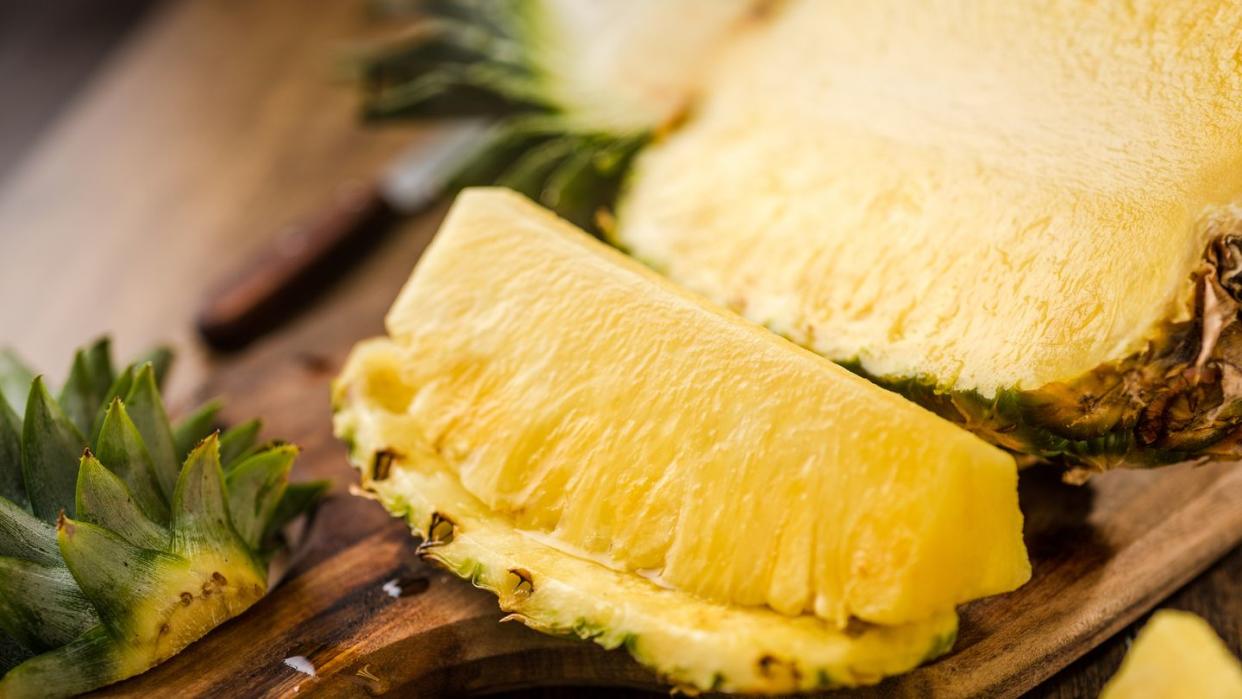
Pumpkin gets all the glory this time of year, but it's definitely not your only option if you're looking for fall fruits and veggies that will make your IG Stories look festive AF. (And, you know, help you eat healthy, too.) These seasonal produce picks are all photo-ready—and packed with good-for-you nutrients.
Carrots
Perfect for soups, stews, and snacking, carrots add plenty of sweetness in a low-sugar bite. A serving is also packed with twice your recommended daily intake of vitamin A, which benefits vision, reproduction, and immune function.
Per 1 medium carrot: 25 cal, 0.2 g fat (0 g sat), 6 g carbs, 3 g sugar, 42 mg sodium, 2 g fiber, 0.6 g protein
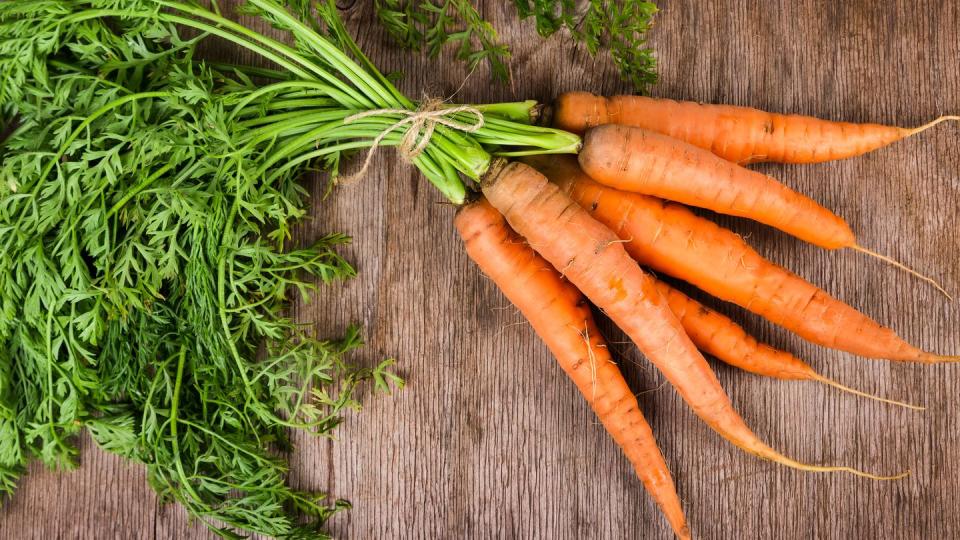
Kale
If you’re not quite a salad fan, baked kale chips (drizzled with a dash of nutritional yeast and cayenne!) are The. Bomb. Rich in vitamin K, these leafy greens aid in blood clotting and contribute to bone health. No wonder the Centers for Disease Control and Prevention named it one of the most nutrient-dense greens to rule the salad bar.
Try it: Garlicky kale & pea sauté
Per 1 cup serving: 7 cal, 0.3 g fat (0 g sat), 1 g carbs, 0 g sugar, 42 mg sodium, 1 g fiber, 0.6 g protein
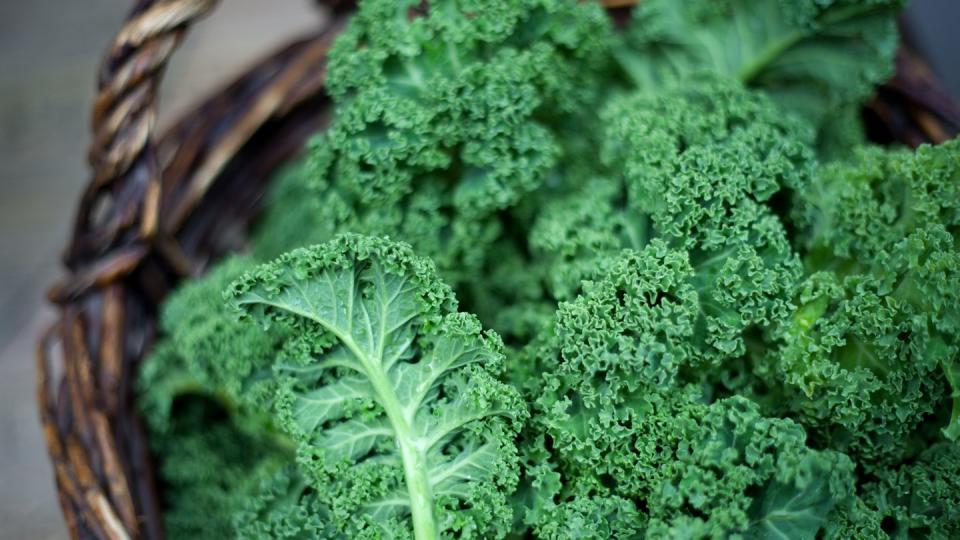
Raspberries
These tart little gems contain a crucial flavonoid called anthocyanins that have protective properties against heart disease, cancer, diabetes and obesity.
Try it: Mango raspberry sorbet
Per 1 cup serving: 64 cal, 1 g fat (0 g sat), 15 g carbs,52 g sugar, 1 mg sodium, 8 g fiber, 1.5 g protein
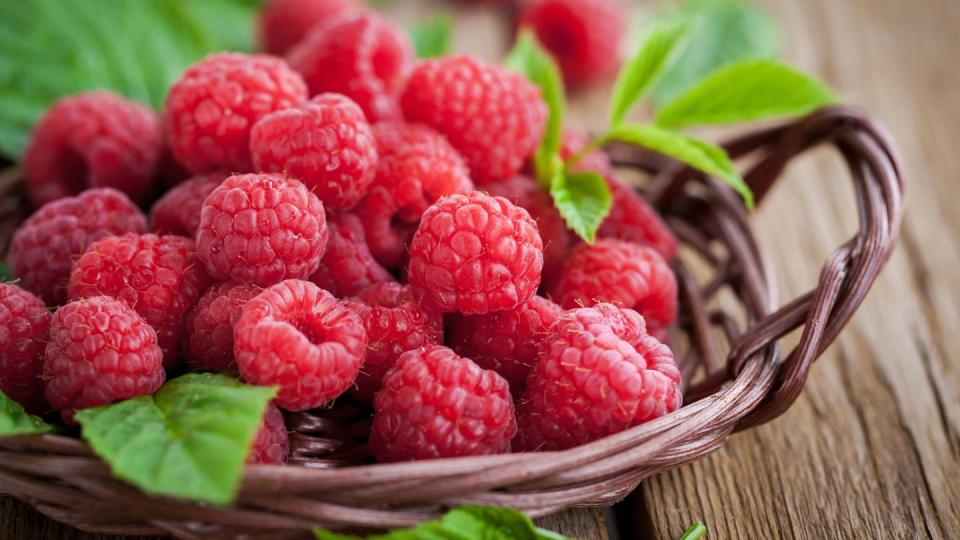
Mushrooms
There’s nothing better than a cream of mushroom soup on a frosty day—and this fall veggie is also super versatile to cook with. Full of prebiotics, they help nourish your gut’s microbiota, ultimately aiding in digestion and warding against inflammation.
Try it: Portabello mushroom burger
Per 1 cup serving: 21 cal, 0 g fat (0 g sat), 3 g carbs, 2 g sugar, 5 mg sodium, 1 g fiber, 3 g protein
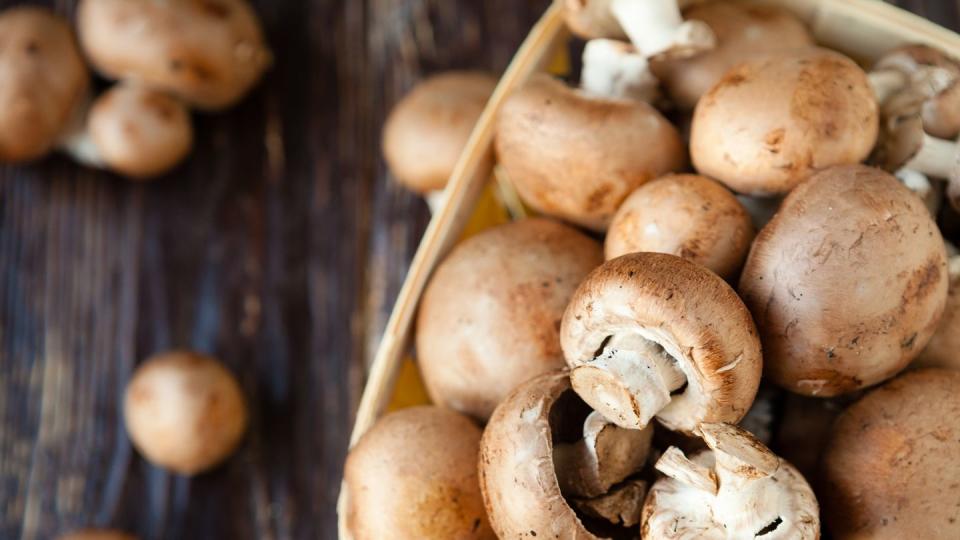
Pineapple
While pineapple juice tastes like a vacation in a cup, it's still fully in season during the fall. Its high bromelain content promotes healthy digestion, and its high manganese count helps speed up that metabolism.
Try it: Pineapple salsa guacamole
Per 1 cup serving: 8 cal, 0.1 g fat (0 g sat), 1.5 g carbs, 0.6 g sugar, 4 mg sodium, 1 g fiber, 0.6 g protein

Butter lettuce
Like its name suggests, this lettuce variety has such a smooth texture, you’ll forget you’re even eating a salad (or Cajun chicken lettuce wraps, or pork lettuce cups…). It’s full of the antioxidant beta carotene and phytochemical lutein, which both play a role in preventing degenerative disease.
Per 1 cup serving: 8 cal, 0.1 g fat (0 g sat), 1.5 g carbs, 0.6 g sugar, 4 mg sodium, 1 g fiber, 0.6 g protein.
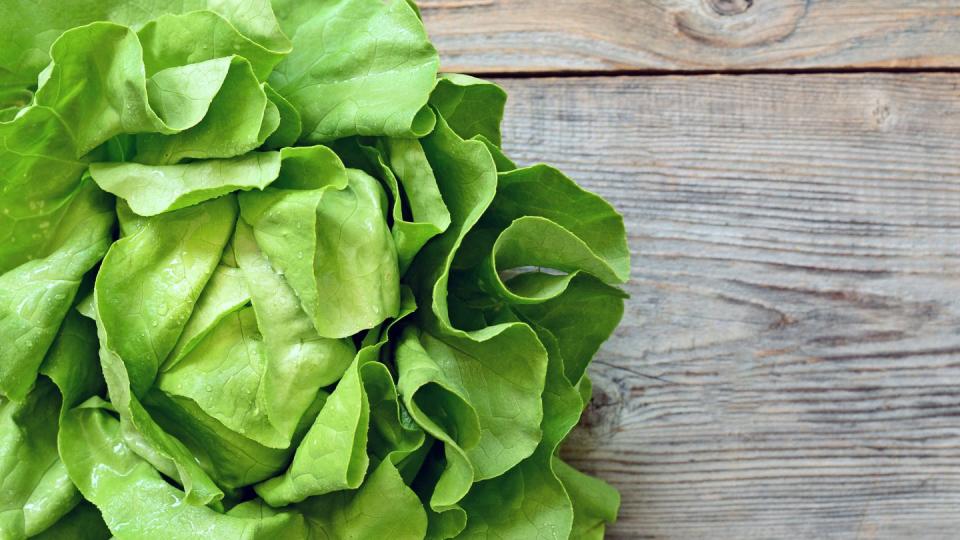
Potatoes
It's easy to forget that, at their core, plain potatoes are a health food. They’re loaded with heart-healthy fiber, resistant starch, and a surprising amount of immune-boosting antioxidants like vitamin C and querctin.
Try it: Rosemary roasted potatoes
Per 1 medium potato: 159 cal, 0.2 g fat (0 g sat), 37 g carbs, 3 g sugar, 12 mg sodium, 4 g fiber, 4 g protein.
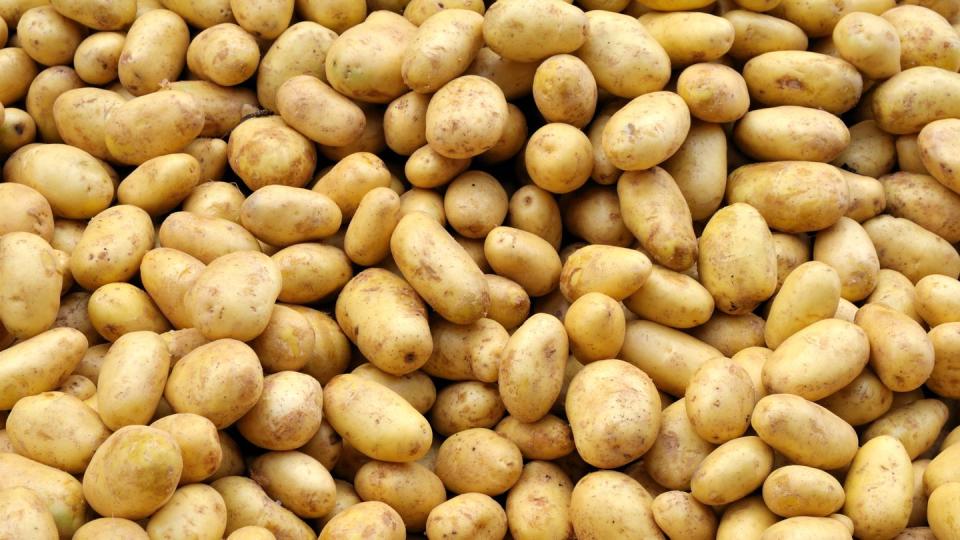
Bananas
Bananas are especially perfect as temps begin to dip, setting the foundation for homemade banana bread and good ol’ bananas with PB on a spoon. They’re high in the mineral potassium, which has been proven to reduce the risk of heart disease and overall mortality.
Per 1 medium banana: 105 cal, 0.4 g fat (0 g sat), 27 g carbs, 14 g sugar, 1 mg sodium, 3 g fiber, 1 g protein.
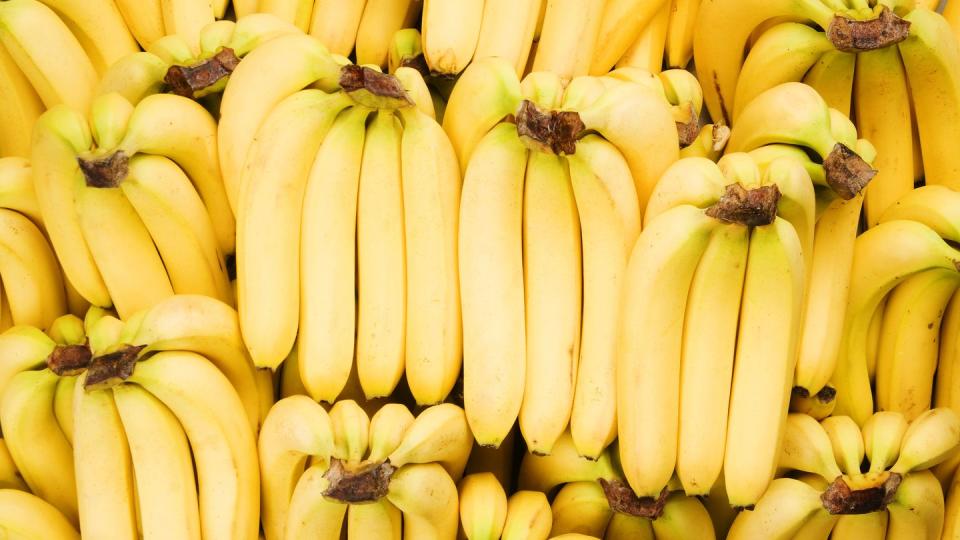
Apples
Nothing screams "fall" quite like apples (and all the activities and treats associated with them). The fall fruit is rich in antioxidants—specifically vitamin C, which helps strengthen the immune system and may even lower your risk of cancer. Additionally, apples are high in the prebiotic pectin, which helps feed your gut bacteria and can help lower cholesterol.
Per 1 medium apple: 95 cal, 0.3 g fat (0 g sat), 25 g carbs, 19 g sugar, 2 mg sodium, 4 g fiber, 0.5 g protein
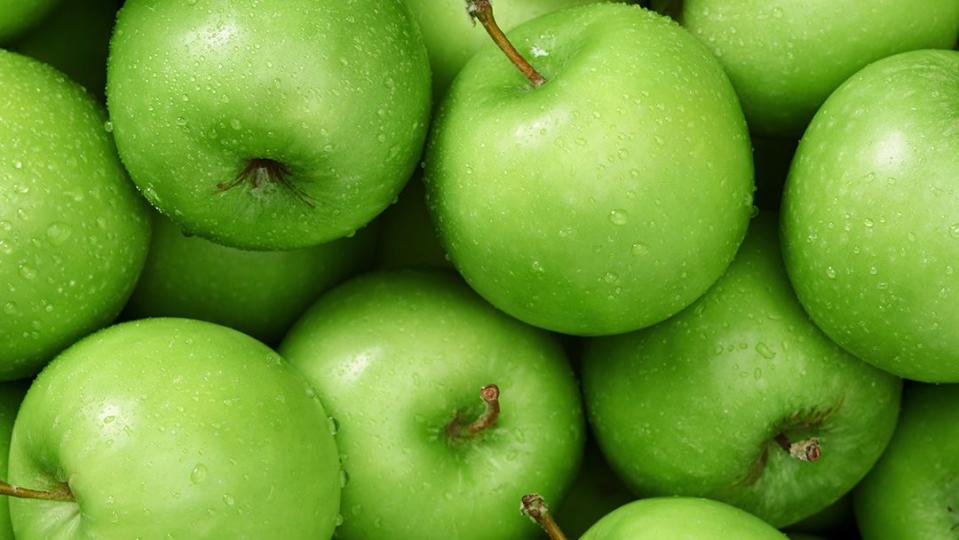
Pumpkin
The fall staple is good for more than just spooky Halloween decorations: Pumpkin is an excellent source of vitamin A, which may improve your vision if you’re deficient. It's also packed with phytosterols, which may decrease bad cholesterol, and beta-carotene, which helps protect against free radicals.
Per 1-cup serving (cooked): 49 cal, 0.2 g fat (0.1 g sat), 12 g carbs, 5 g sugar, 2 mg sodium, 3 g fiber, 2 g protein
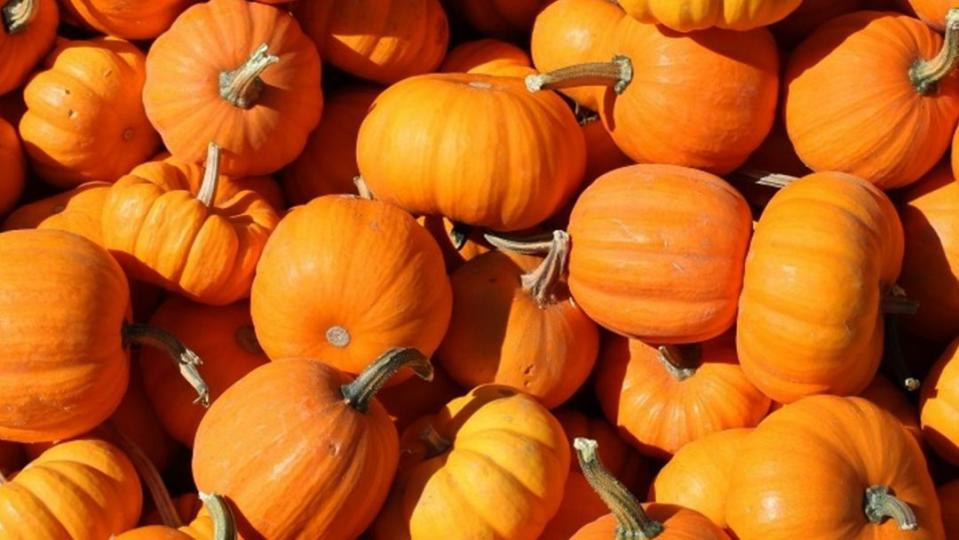
Brussels Sprouts
Trust, you're not the only one scarred by childhood memories of disgusting, boiled Brussels sprouts. But you should give the fall vegetable another chance. Sprouts are a good source of iron, which helps your body form red blood cells, as well as vitamin K, which can boost bone health. The mini cabbages are also packed with vitamin C so you can survive cold season intact. Roast them with some EVOO and salt and pepper and they're instantly way more delicious.
Try it: maple-glazed Brussels sprouts
Per 1-cup serving (raw): 38 cal, 0.3 g fat (0.1 g sat), 8 g carbs, 2 g sugar, 22 mg sodium, 3 g fiber, 3 g protein
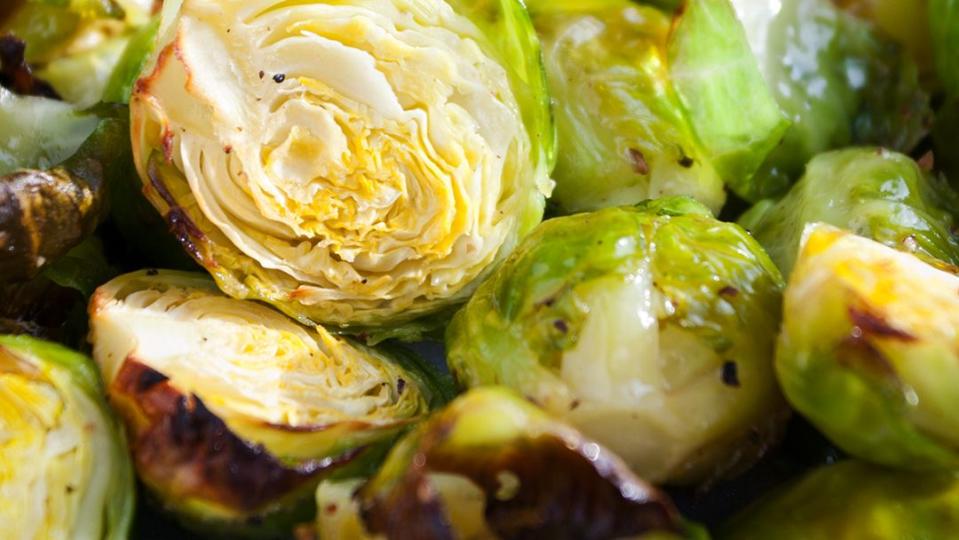
Figs
This fall fruit is a solid source of fiber, which may help decrease cholesterol, promote blood sugar control, prevent constipation, and keep you feeling full longer. Figs are also packed with potassium, which helps control your blood pressure.
Per large fig: 47 cal, 0.2 g fat (0 g sat), 12 g carbs, 10 g sugar, 1 mg sodium, 2 g fiber, 0.5 g protein
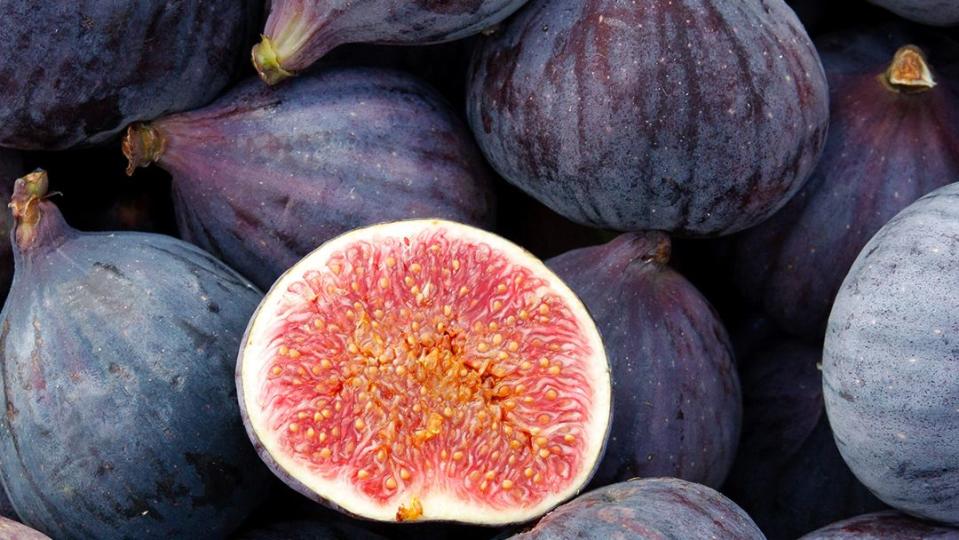
Cauliflower
All of that cauli rice you've been mainlining is good for your bod beyond the whole low-carb thing. Cauliflower is a stellar source of vitamins C and K, which help to regulate your inflammatory response. Cauliflower is also rich in folate, which is crucial for any women thinking of conceiving since it helps prevent neural tube defects.
Try it: cauliflower tikka masala
Per 1-cup serving: 27 cal, 0.3 g fat (0.1 g sat), 5 g carbs, 2 g sugar, 32 mg sodium, 2 g fiber, 2 g protein
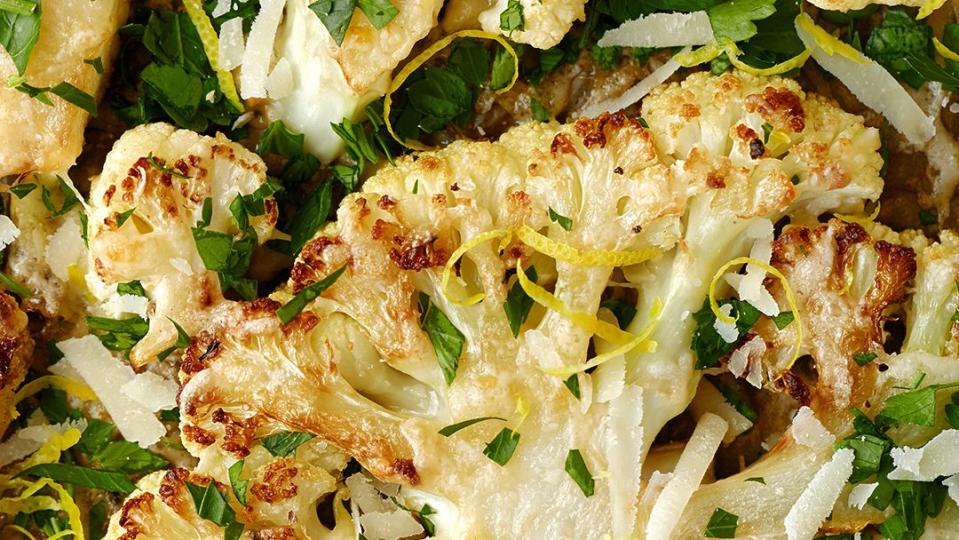
Beets
Beets deserve so much better than a life untouched in the salad bar. The fall root vegetable contains a phytonutrient called betalains, which has antioxidant and anti-inflammatory properties. Beets are also a good source of folate, potassium, and manganese, which helps with calcium absorption and blood clotting.
Try it: roasted beets with pistachios
Per 1/2-cup serving (slices): 37 cal, 0 g fat (0 g sat), 8 g carbs, 7 g sugar, 65 mg sodium, 2 g fiber, 1 g protein
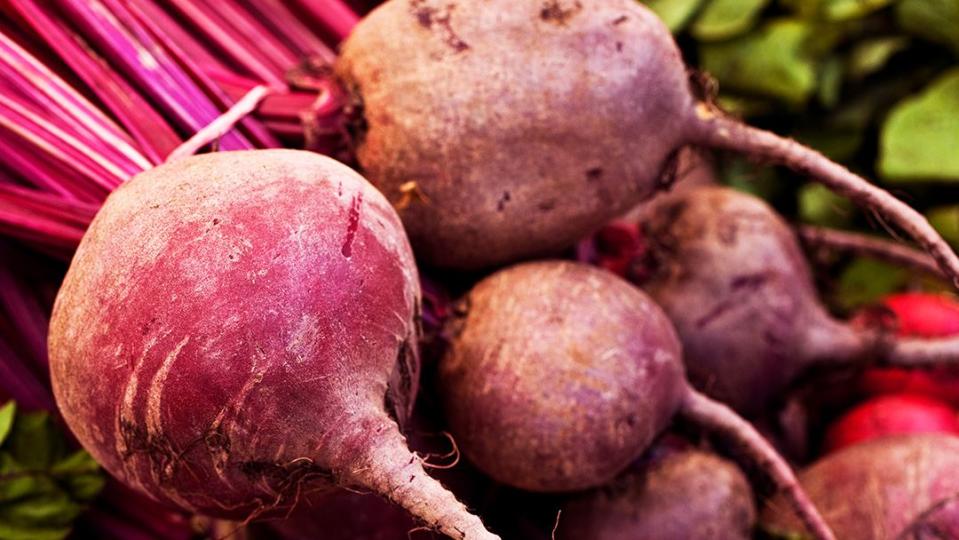
Pears
Pears can make any fall recipe tastier and more nutritious. The fruit is a good source of fiber, and provides the antioxidant vitamin C, copper (which may help prevent against certain cancers), and boron, a nutrient that helps the body retain calcium.
Try it: chicken with pears and walnuts
Per 1 medium pear: 101 cal, 0 g fat (0 g sat), 27 g carbs, 17 g sugar, 2 mg sodium, 6 g fiber, 1 g protein
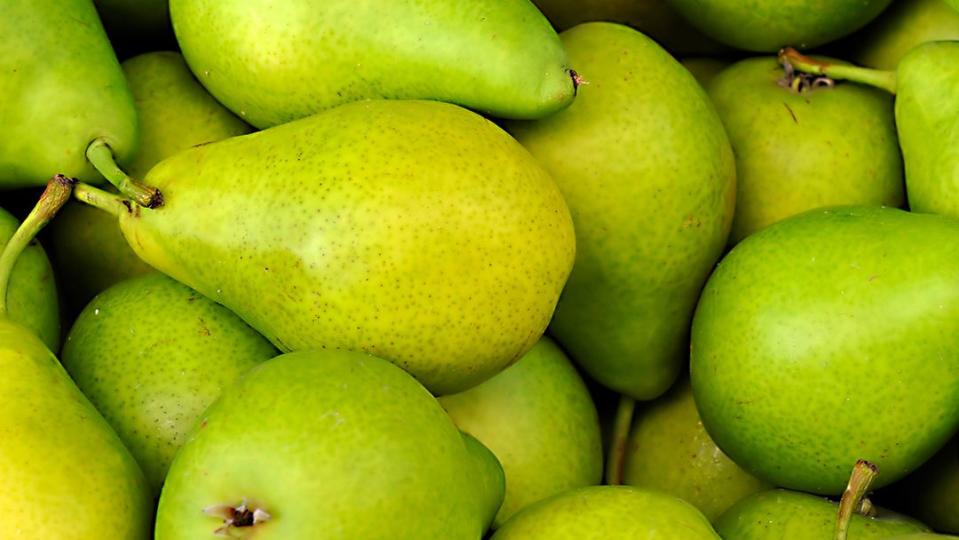
Pomegranate
Juicy pomegranate arils are the jewels of fruit both in appearance and health properties. According to Janel Funk, RD, they’re packed with antioxidants that fight disease, fiber, and potassium, which promotes cardiovascular health and improves blood pressure.
Try it: pomegranate margaritas
Per 1/2-cup serving: 72 cal, 1 g fat (0 g sat), 16 g carbs, 12 g sugar, 3 mg sodium, 4 g fiber, 1 g protein
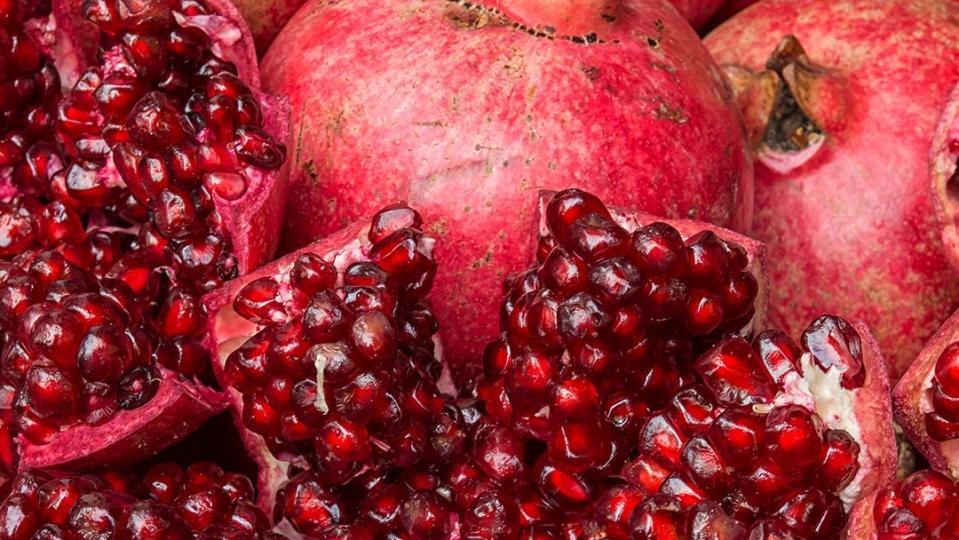
Cranberries
Cranberries have a ton of health benefits, including being high in fiber and prebiotics (both of which are good for gut health), and packing in vitamin C and antioxidants in every serving. (But no, they're not going to help with your UTI, sorry.)
Try it: cranberry-walnut date bread
Per 1/2-cup serving: 23 cal, 0 g fat (0 g sat), 6 g carbs, 2 g sugar, 1 mg sodium, 3 g fiber, 1 g protein
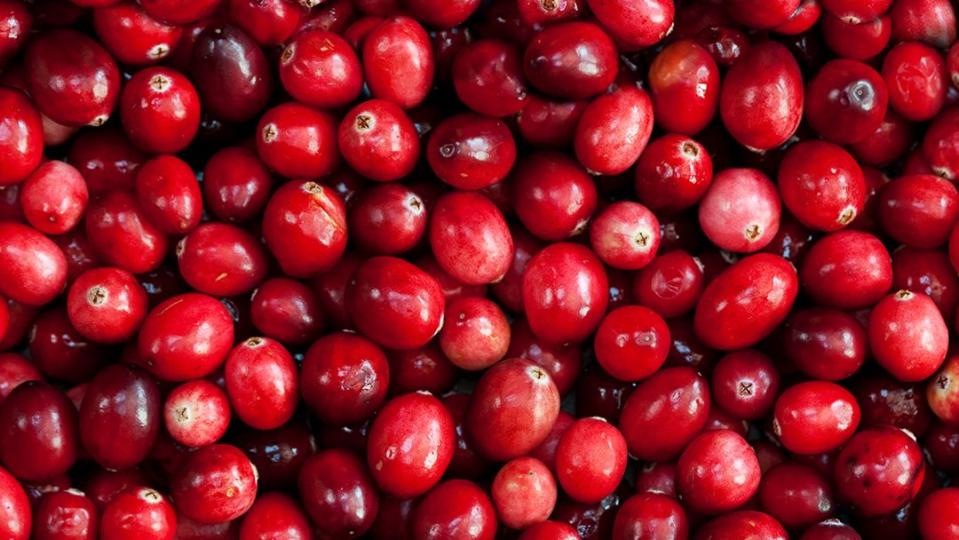
Butternut squash
Butternut squash is rich in fiber, eye-protecting beta-carotene, and immune-boosting vitamin C. Like other winter squashes, it's in season in fall through late winter.
Try it: Moroccan couscous with roasted butternut squash
Per 1-cup serving, cubes: 63 cal, 0.1 g fat (0 g sat), 16 g carbs, 3 g sugar, 6 mg sodium, 3 g fiber, 1 g protein
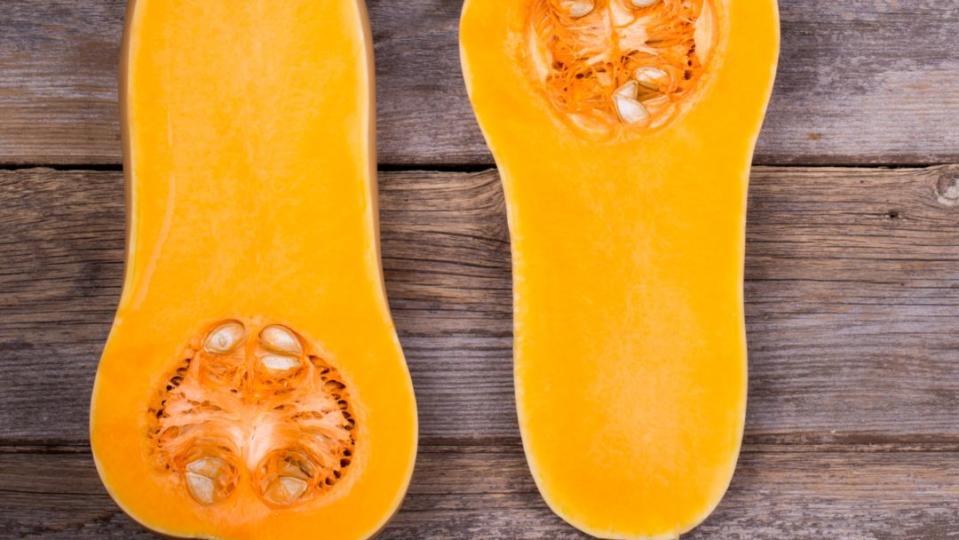
Sweet potato
Another fall vegetable you can technically get all year long, sweet potatoes pack in tons of fiber, vitamin A, and vitamin C in each serving. And obviously, they make really good fries.
Try it: black bean-sweet potato fudge brownies
Per whole sweet potato: 112 cal, 0.1 g fat (0 g sat), 26 g carbs, 5 g sugar, 72 mg sodium, 4 g fiber, 2 g protein
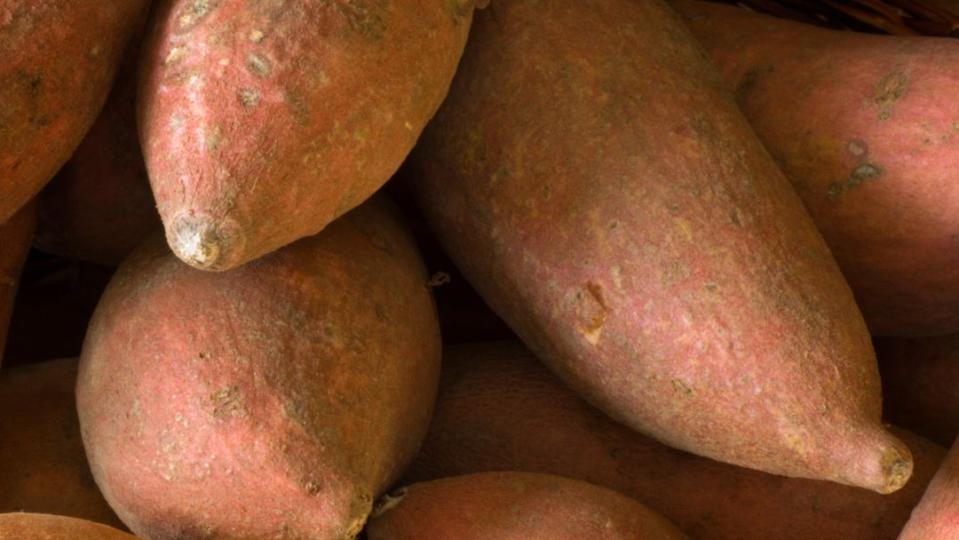
Grapes
This fall fruit is good for more than just wine (although obviously, please keep up the good work with the wine-making, grapes!). They're packed with polyphenols and vitamin K (which helps build stronger bones).
Try it: pork tenderloin with roasted grapes
Per 1 cup serving: 104 cal, 0.2 g fat (0 g sat), 27 g carbs, 23 g sugar, 3 mg sodium, 1 g fiber, 1 g protein
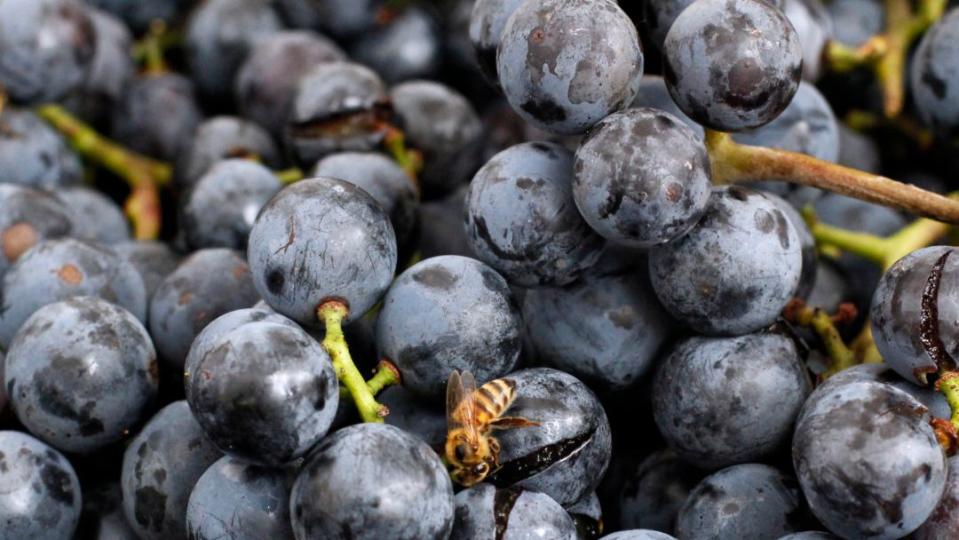
You Might Also Like

